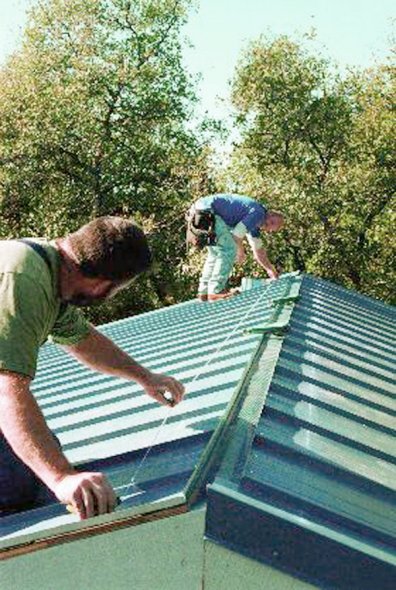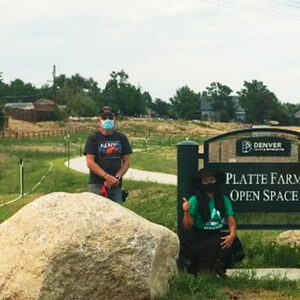
Image Credit: GreenBuildingAdvisor.com
One of the oldest, simplest, and least expensive ways to reduce the heat absorbed by a sun-exposed roof or other exterior surface is, as Department of Energy Secretary Steven Chu recently put it, to “make it white.”
As noted in a story about white roofs in Thursday’s New York Times, Chu made that observation during a July 21 appearance on Comedy Central’s The Daily Show.
True, most of Chu’s chat with the show’s host, Jon Stewart, focused on the merits of the cap-and-trade provisions of the American Clean Energy and Security Act. But near the end of the conversation, Chu briefly discussed the energy-saving potential of white roofs (and white roads). And the topic seemed to strike a chord with folks who heard Chu’s remarks: almost all of the viewers who posted comments on The Daily Show Web page featuring the Chu segment focused on the benefits of white roofs and roads.
Chu’s comments were timely. A draft presentation on the subject was released on Wednesday by the Lawrence Berkeley National Laboratory, in a document titled “Cool Roof Q&A.”
A primer on roof color
The Q&A offers both consumer-oriented information and technical descriptions of the ways roofing materials and their color affect their “radiative” properties – their ability to reflect solar radiation (on a scale of 0 to 1) and emit thermal radiation (on a scale of 0 to 1) – when exposed to sunlight. The coolness rating of a material, known as its solar reflective index, is often compared to that of a reference black roof, which is assigned an SRI of 0, and that of a reference white roof, whose SRI is 100. That doesn’t rule out the possibility, however, that some materials may earn index values above or below the references.
The Q&A cites as an example a roof with a clean, smooth bright white surface that reflects about 85% of incident sunlight (giving it a reflective, or “R,” value of 0.85) and emits thermal radiation with 90% efficiency (giving it an emittance, or “E,” value of 0.90). This surface, the document explains, has an SRI of 107 and will be only 9°F warmer than the outside air on a typical summer afternoon. Meanwhile, the surface of a standard gray roof that has the same emittance value but reflects only about 20% of incident sunlight (R = 0.20, E = 0.90) would have an SRI of just 19 and a surface temperature elevation (surface temperature minus outside air temperature) of 69°F.
Rosenfeld’s big picture
The document does note that exposure to weather over a three-year period typically does not change the thermal emittance but does reduce the reflectance of a low-sloped bright white roof to about 65%, pushing its SRI down to 79. After similar exposure, the reflectance and thermal emittance of a standard gray roof remain unchanged – but so does the roof’s relatively poor SRI.
California Energy Commission member Arthur Rosenfeld, who, the Times notes, is one of Secretary Chu’s heroes and a longtime advocate of cool roofs, recently wrote an opinion piece for the Huffington Post that cited one of his favorite illustrations of cool-roof efficiency.
“From a global perspective,” Rosenfeld wrote, “replacing dark roofs with cool ones would be equivalent to taking half the world’s cars – 300 million vehicles – off the road for 20 years, or reducing 24 billion tons of CO2 emissions for the same period.”
Weekly Newsletter
Get building science and energy efficiency advice, plus special offers, in your inbox.













2 Comments
Cool Roof Cleaning
I have a 300K sf building with a cool roof that is about 3 years old. The roof isnt as white as it used to be. I have a proposal to clean the roof, but need to supply an estimate on payback savings. Does anyone have any idea how I can determine this?
Proper Roof Venting
Proper roof venting is an important part of a cool roof. I use window screen and battening at the soffit and a continuous ridge venting. There are low profile ridge vents that work quite well. I consider 1 sq. ft of venting per liner ft. at ridge and soffit a minimum. Keeping a tight seal at screen edges is important or wasps and bees will move in.
Log in or create an account to post a comment.
Sign up Log in